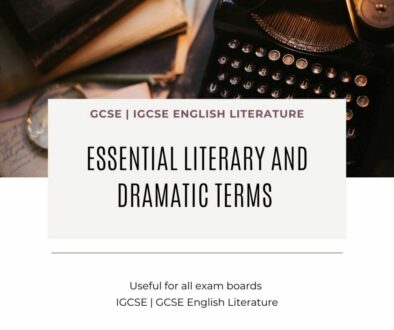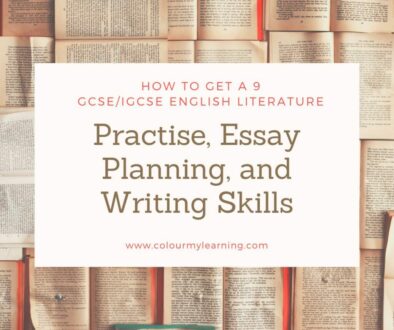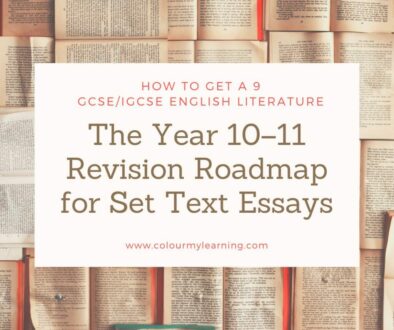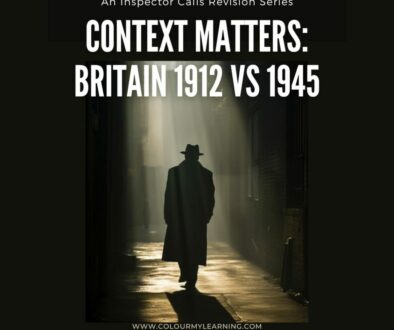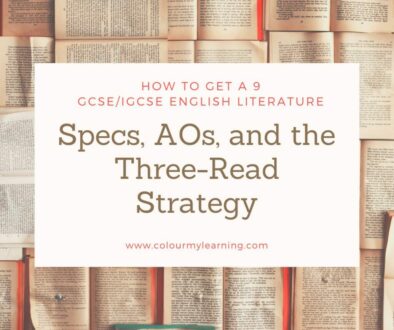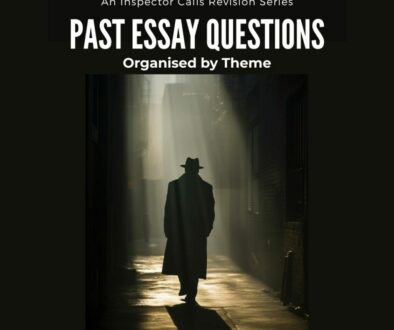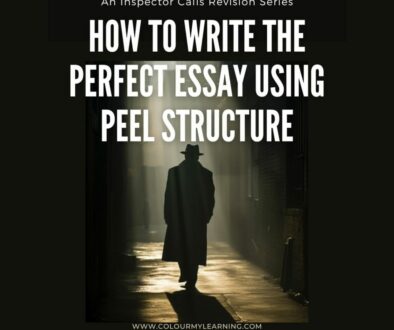How to Build a Quote Bank for GCSE/IGCSE English Literature
Building a quote bank is one of the most effective ways to prepare for the GCSE or IGCSE English Literature exam. A well-organised selection of short, high-impact quotations can make it easier to plan essays, remember key ideas, and write confidently in timed conditions. Instead of memorising entire scenes or pages, focus on gathering meaningful lines that connect clearly to the main themes, characters, and techniques in your set texts. These quotes act as anchors during revision and allow you to build insightful points in your writing.
What Is a Quote Bank?
A quote bank is your personalised collection of carefully chosen quotations from the text you’re studying. Think of it as a toolbox: each quote is a sharp, precise tool you can reach for when tackling essay questions. A good quote bank is not just a list — it’s organised and annotated, making it easy to revise and apply.
Rather than storing every line that sounds impressive, choose quotations that are short, memorable, and rich in meaning. Include notes on the theme, character, or technique they connect to, and add a few words of analysis to remind yourself how to use them effectively in writing. Strong quote banks include:
- Short quotes (5–10 words) that are easy to recall
- Notes on theme, character or technique
- Brief analysis to help you understand how to use them in context
Building your own quote bank encourages active revision and deeper thinking, which leads to stronger exam responses.
What Makes a Golden Quote?
Not all quotes are created equal. The best quotes for exams share a few common features:
- They’re short enough to memorise easily. Ideally no more than 5–10 words.
- They carry weight; based on a strong theme, technique, or insight into a character.
- They’re flexible. This means they could be used in multiple essay contexts.
Choose lines that do more than just describe. When good quotes are put to use they reveal a key turning point, a character’s internal conflict, or a writer’s message to the audience, a well-chosen quote helps you explore layers of meaning and write with insight.
Remember, the best exam quotes are:
- Short and memorable
- Rich in meaning or dramatic technique
- Linked clearly to major themes or characters
Example (An Inspector Calls):
“We are members of one body.”
– A key quote that links to responsibility, social conscience, and Priestley’s socialist message.
Example (Macbeth):
“Unsex me here.”
– Reveals ambition, gender roles, and internal conflict.
Step-by-Step: How to Build Your Quote Bank
1. Organise by Theme and Character
The most effective quote banks are structured by the kinds of questions you’ll face in the exam. GCSE and IGCSE questions are usually framed around themes and characters, so these make the best categories for your quote bank.
Start by listing the key themes in your text. For example:
Themes
- Power and control
- Responsibility
- Gender
- Ambition
- Conflict
- Social class
- Isolation
Then, make a section for each important character — such as Macbeth, Lady Macbeth, Sheila, the Inspector, Scrooge, or Curley’s Wife. Under each heading, you’ll be able to group relevant quotes, making it easier to revise or find what you need for a specific essay.
Characters
- Macbeth, Lady Macbeth
- Mr Birling, Sheila, the Inspector
- Scrooge, Tiny Tim
- George, Lennie, Curley’s Wife
- The Creature, Victor Frankenstein
2. Add Quotes with Quick Analysis
Under each theme or character, select around 3 to 5 impactful quotes. For each one, include a short analysis. Even just one or two sentences explaining how the quote relates to the character, theme, or dramatic technique will be valuable. This will help you remember not just the quotes, but why they matter.
Quote: “But these girls aren’t cheap labour – they’re people.” – Sheila
Theme: Social class, gender
Technique: Contrast, moral awakening
Comment: Shows Sheila’s growing awareness of inequality, her own privilege and her rejection of her father’s capitalist mindset.
This kind of annotation turns your quote bank into a mini revision guide, giving you a clear reminder of how each quote could be used in your essays.
3. Use Symbols or Colour for Easy Navigation
To make your quote bank even more effective, introduce a visual system to help you scan and find quotes quickly. You can use coloured highlighters, emojis, or symbols to tag each quote based on how it can be used.
Here are some useful icons and codes:
Try:
- ⭐ = Key quote, works across multiple themes
- 🧠 = Reveals inner thoughts
- 🎭 = Shows dramatic irony or technique
- 🔁 = Could be used in comparison
- 📝 = Ideal for AO2 language analysis
This visual layer is especially useful if you’re using flashcards or digital tools like Notion, Google Docs, or Quizlet, where you can filter or search by symbol or tag.
4. Test Yourself with Short Quizzes or Flashcards
Once you’ve built your quote bank, don’t just read it passively — engage with it actively. Use short quizzes, flashcards, or timed challenges to practise retrieval and application.
Some practical ways to do this:
- Write a quote with one or two words blanked out — can you fill in the missing parts?
- See if you can match the quote to the theme or character without looking at your notes.
- Create mock exam questions and try writing a paragraph using a selected quote.
- Shuffle your quotes and test whether you can explain their significance under exam-style pressure.
Use tools like Anki, Quizlet, or even PowerPoint to create self-testing loops that improve your memory and confidence.
5. Practise Using Quotes in Paragraphs
To get the full benefit of your quote bank, you need to learn how to integrate quotes smoothly into analytical writing. Use a structure like PEEL or PETAL to practise:
Use PEEL or PETAL to practise:
- Point: Make a clear argument
- Evidence: Use a short quote
- Technique: Identify a dramatic or language feature
- Analysis: Explain meaning and effect
- Link: Relate to the question or writer’s message
For example:
Essay Question: How is social responsibility presented in An Inspector Calls?
Quote: “We are members of one body.”
Response: Priestley presents the Inspector as a mouthpiece for his socialist views and to promote a message of collective responsibility. When he declares, “We are members of one body,” the metaphor suggests that society is interconnected. It highlights Priestley’s belief in community over individualism, a central message of the play.
Revision Tips for Building and Using Your Quote Bank
- Build your quote bank gradually. Update it after each lesson or act that you read.
- Focus on quality over quantity. A handful of meaningful, well-analysed quotes is more effective than pages of unorganised lines.
- Make sure you cover a range of characters and themes.
- Link quotes to past exam questions early on, so you’re used to applying them in context.
- Revisit your quote bank often. Spaced repetition strengthens memory.
Final Thoughts
Quote banks are one of the most powerful tools for English Literature revision. They help you remember key lines, organise your thinking, and build confidence when it matters most. Build your own, make it work for you, and use it to level up your essays with precision and clarity.


